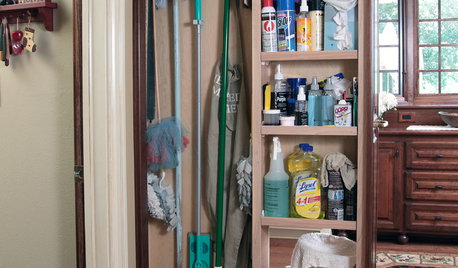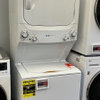... just one tablespoon of detergent ? (cont'd)
sshrivastava
12 years ago
Featured Answer
Sort by:Oldest
Comments (20)
vintage36
12 years agowestvillager
12 years agoRelated Professionals
Andover Kitchen & Bathroom Remodelers · Crestline Kitchen & Bathroom Remodelers · Fort Myers Kitchen & Bathroom Remodelers · Linton Hall Kitchen & Bathroom Remodelers · Terrell Kitchen & Bathroom Remodelers · Phillipsburg Kitchen & Bathroom Remodelers · Joppatowne Kitchen & Bathroom Remodelers · Holt Cabinets & Cabinetry · Little Chute Cabinets & Cabinetry · Saint James Cabinets & Cabinetry · Centreville Custom Closet Designers · Fort Worth Custom Closet Designers · Glen Rock Custom Closet Designers · Monroe Flooring Contractors · Poughkeepsie Flooring Contractorssshrivastava
12 years agosshrivastava
12 years agolivebetter
12 years agosshrivastava
12 years agovintage36
12 years agolivebetter
12 years agovintage36
12 years agoCavimum
12 years agoCavimum
12 years agoCharterOps
12 years agoCharterOps
12 years agoGeri L
5 years agodaydreams33
5 years agodaydreams33
5 years agodavegvg
5 years agolast modified: 5 years agokeithrg
5 years agolast modified: 5 years agokeithrg
5 years agolast modified: 5 years ago
Related Stories

LAUNDRY ROOMSRoom of the Day: The Laundry Room No One Wants to Leave
The Hardworking Home: Ocean views, vaulted ceilings and extensive counter and storage space make this hub a joy to work in
Full Story
MOVINGThe All-in-One-Place Guide to Selling Your Home and Moving
Stay organized with this advice on what to do when you change homes
Full Story
FARM YOUR YARDHouzz Call: Show Us Your One-of-a-Kind Chicken Coops
Do you have a fun or stylish backyard shelter for your feathered friends? Post your pictures and stories in the Comments!
Full Story
KITCHEN DESIGNKitchen Recipes: Secret Ingredients of 5 One-of-a-Kind Cooking Spaces
Learn what went into these cooks’ kitchens — and what comes out of them
Full Story
CLOSETSGet Your Broom Closet Just Right
The Hardworking Home: Make cleanup easier with storage space that neatly organizes your equipment and supplies
Full Story
HOUSEKEEPINGTo Do: Choose Your Weekend Project
You know the one — it's been hanging over your head for months. Just pick one from your list to do now, and enjoy the change
Full Story
HOLIDAYSMercifully Minimal Halloween Decor
Don't fret last-minute Halloween decorating — sometimes just one perfect pumpkin is all the fall embellishment your front yard needs
Full Story
SAVING WATER11 Ways to Save Water at Home
Whether you live in a drought-stricken area or just want to help preserve a precious resource, here are things you can do to use less water
Full Story
LAUNDRY ROOMSA Kitchen Laundry Cabinet Full of Surprises
A little DIY spirit allowed this homeowner to add a washer, dryer, kitchen countertop and dining table all in one
Full Story
MOST POPULARKitchen of the Week: Broken China Makes a Splash in This Kitchen
When life handed this homeowner a smashed plate, her designer delivered a one-of-a-kind wall covering to fit the cheerful new room
Full Story








happymomof2kids